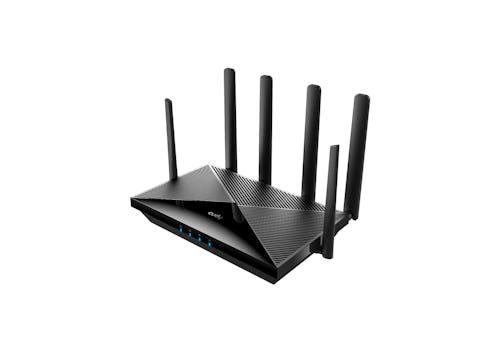
Right now I’m staying at my parents’ home in rural Tennessee, and the internet is, well, bad. And it’s not for lack of initiative on their part; they’ve been trying to get traditional internet access to their home for nearly 10 years. But because this house is about a mile outside of city limits, not a single cable-based provider will touch us.
We’re not alone. All over the country, people in rural (and even suburban) areas have resorted to all kinds of hacks just to get access to the internet. Some are constructing their own municipal mesh networks, while others are waiting, hoping, and praying that Starlink will service their area.
What is a cellular router?
So what do you do when you need internet access but Starlink isn’t an option? The answer: a cellular router. These all-in-one devices include both a cellular modem, which you need to connect to 4G and 5G towers, and a regular Wi-Fi router all in one device. For a long time people were hooking up their mobile hotspots to regular Wi-Fi routers, but this just adds complexity and points of failure, so a cellular router combines and streamlines everything so that you don’t have to have a networking degree to get things working.
These devices aren’t new — Verizon has offered them to rural customers for a few years now – but only recently have non-carrier branded cellular routers hit the market at approachable prices. These devices are also considerably more powerful than their first-gen counterparts, boasting CAT4 performance at the low-end all the way up to CAT18+ on the high-end.
CAT numbers explained
These CAT (category) numbers are important to pay attention to because they define what features the modem has, like carrier aggregation (CA), MIMO, and QAM. Getting into each feature is a bit beyond the scope of this article, but generally speaking, the higher the CAT number, the faster the modem can go.
Just to give an example of CAT numbers in a rural context, I have a CAT18 router working right next to a CAT6 one, both with identical antennas. We’re quite far from the towers, so even though the CAT18 router is much more advanced than the CAT6 one, they both perform almost exactly the same because of how far we are from the towers.
So even though CAT numbers are important, a higher CAT does not guarantee fast speeds by any means.
Antennas
One of the most important features of cellular routers is the external antenna connectors. Many mobile hotspots don’t have any external antenna ports, and this is a big problem for people trying to get internet access at the last mile.
Here at our house, we have about one bar of signal on all three carriers while standing outside. This is enough, actually, for about 20Mbps of speed depending on the time of day. That’s not a lot, but it’s enough to get by. Inside the house, however, the signal drops to practically nothing. One of those mobile hotspots simply won’t work.
So, by using a cellular router with real antenna connections, we can place a MIMO panel antenna on the side of our home, pointed toward the center of town, and actually get that 20Mbps of signal.
Cellular plans
The other thing to keep in mind with these cellular routers is that you’ll need a plan for them. This is sadly not as easy as it sounds, since U.S. cellular carriers are so reluctant to offer truly unlimited data.
It is possible, however. If you’re not eligible for T-Mobile’s branded home internet service, you can get a Magenta plan with the Global Plus add-on and have truly unlimited “hotspot” data. These router-compatible data plans are not cheap, and sometimes carriers will only offer them as business plans.
If you don’t have that kind of money, there are also ways to get cheaper plans, like the ones available for tablets, to work on cellular routers. Doing so is almost certainly in violation of the carrier’s terms of service, but many people do it anyway because they have no other choice. I would argue that the FCC should step in and force the carriers to offer truly unlimited data plans if the agency won’t force cable internet companies to service rural homes, but that’s just one man’s opinion.
So without further ado, here are the best cellular routers you can buy right now.
Input may receive a portion of sales if you purchase a product through a link in this article. We only include products that have been independently selected by Input's editorial team.
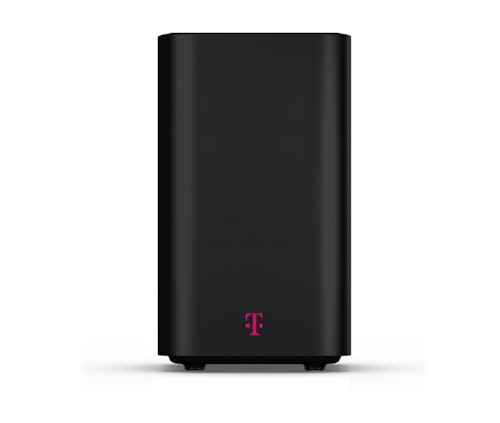
If you’re in T-Mobile’s home internet service area, definitely get the company’s 5G gateway. Input Deputy Editor Ray Wong switched to T-Mobile Home Internet last year and was impressed. (He, however, lives in New York City, not the sticks, so your mileage will likely vary greatly.) With the right signal, you can get 400+ Mbps in the real world, and because it’s carrier-supported hardware, it’s guaranteed to work.
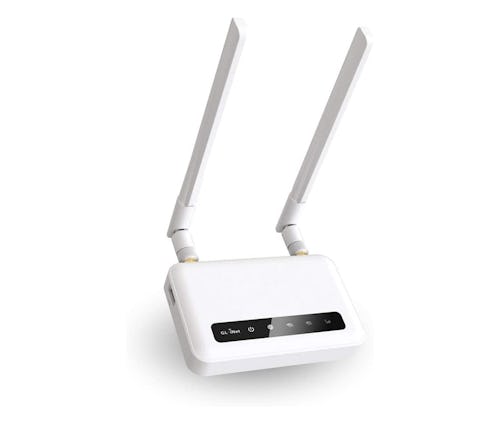
Even though this device is only CAT4, it’s cheap, has external antenna connectors, and GL.iNet’s firmware is reasonably good. The GL.iNet GL-X750V2 is a good router for someone looking for something cheap and plug-and-play. Doesn’t work on Verizon, however.
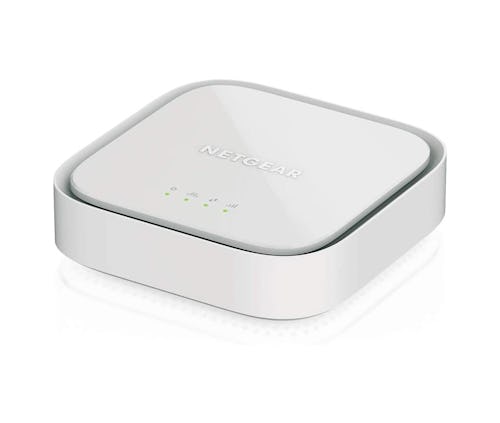
Just like the GL-X750V2 above, Netgear’s LM1200 is a cheap CAT4 router, but unlike the X750V2, it’s approved to work on Verizon’s network. It also has external antenna connectors.
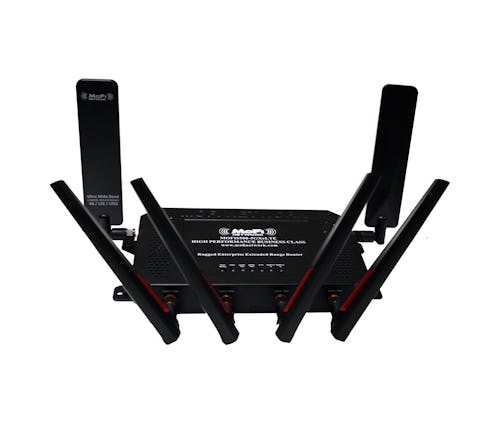
If you’re dead set on getting the fastest speeds at your location and money isn’t an issue, the MOFI5500-5GXeLTE-EM9191-Combo CAT20 LTE + 5G Router (this is actually the name!) is for you. It comes with a CAT20 LTE and 5G modem and all the ports, antennas, and options you could ever want.
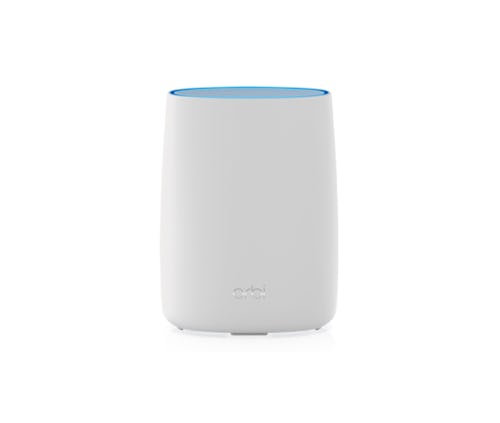
If you still want fast speeds but can’t spend $700 on a cellular router, Netgear’s Orbi 4G LTE is for you. It works with all three carriers right out of the box, and if you’re the technical type, there’s a whole scene of people making custom firmware for it.

The NEXQ6GO-M Cellular Wi-Fi Router is a cellular router without a modem. It’s essentially a blank slate – you can drop a cheap CAT6 modem into it, or you could put a pricey CAT18 modem in there and essentially build your own MOFI5500 for a lot less money. Only for the technically inclined.
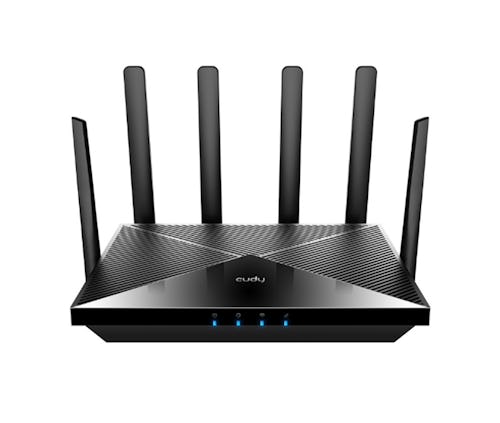
The Cudy LT18 router is pricey, but includes a lot of nice features like a CAT18 modem, Wi-Fi 6, and dual sim slots for automatic failover. Also has a more traditional form factor that will look a bit less like an alien spaceship or industrial hardware.







